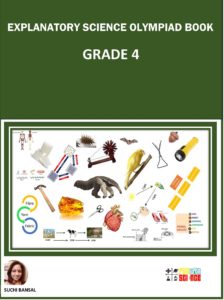Carbon Dioxide(CO2)
Do you know what carbon dioxide is? Well, carbon dioxide is a gas, which consists of 1 carbon atom and 2 oxygen atoms and is present in our Earth’s atmosphere. Here is how it looks
Carbon Basics
What is Carbon?
Carbon is present in CO2. Carbon is an element in the periodic table of elements. The periodic table has all the basic elements used to make other things. Carbon’s atomic number is 6. It is in a group called the carbon elements.Carbon is a non-metal. The elements in the carbon elements are silicon, germanium, tin, and lead. Carbon can be easily mixed with other elements to make other compounds. It isn’t always black.
Why is CO2 so essential? Well, I’m glad you asked. CO2 is all around us. From humans, to diamonds!
If you ever wonder what keeps you warm, it’s greenhouse gasses. One of them is carbon which is present in CO2. Greenhouse gasses are used to keep you warm by trapping the sun’s warmth else we might feel shivering cold!
Harmful effects of CO2? If we get too much CO2, it will cause more severe global warming. It can cause tsunamis, floods. Ocean life has a very complicated system. If the ocean temperature increases by 1 degree fahrenheit, it can kill many sea animals and Coral reefs.
Carbon Cycle
The carbon cycle is a series of steps where absorbed in some way is now being released back to the atmosphere. There are
many ways for that to happen.
Here are some ways that carbon is being released to the atmosphere.
Way 1: Respiration
Animals and other organisms take in carbon through food and release it as carbon dioxide when their dung (poop) or bodies decompose.
Way 2: Burning fossil fuels
The main reason why the planet is getting hotter is because of human activities. Cars, planes, homes, factories, and power stations release carbon dioxide into the atmosphere.
Way 3: Volcanic action
Volcanoes and hot springs slowly return carbon from long-term underground stores into air as carbon dioxide.
Way 4: Deforesting
Cutting down forests releases carbon back into the air if the trees are burned or dead vegetation is left to decompose.
Way 5: Ocean exchange
Carbon dioxide passes between the oceans and air. The world’s oceans take in more carbon than they release.
Here are some ways where carbon is being absorbed
Way 1: Marine carbon capture
Some marine organisms use carbon dioxide to make shells. When they die, their remains sink to the seabed and fossilize to form limestone, which acts as a long-term carbon store.
Way 2: Fossilization
Some organisms don’t decay after dying. Instead, they become buried, trapping carbon in the ground. Over millions of years, their remains form fossil fuels.
Way 3: Photosynthesis
Plants take in carbon dioxide from the air to make nutrients by photosynthesis. They also release carbon dioxide through respiration.
How can we reduce carbon dioxide?
The level of CO2 has so much increased in the atmosphere, that every individual must take actions towards reducing it for a better future. One small change can make a huge impact on our Mother Earth.
●Reducing carbon dioxide is super simple. Instead of getting rid of recyclable material by littering or putting it in the trash, recycle it. I know, I know, it uses energy, but it uses less energy than making it.
●Use electric vehicles instead of gasoline or diesel.
●Use renewable energy to power your houses. Some renewable energy you can install are wind power or solar power.
My proposition towards reducing CO2
Air is sucked in through giant turbines. There will be an earth-abundant catalyst based on copper-oxide nanowires modified with tin oxide to separate carbon and oxygen from the air(Sometimes it will go through a vacuum UV light to do the separation). The carbon and oxygen (from the air) will be going separate ways. During the day time, carbon will be stored underground to fossil fuels and the oxygen will be released by tall pipes.
To save energy (instead of vacuum UV), during the night, carbon dioxide is mixed with water to make carbonic acid. Carbonic acid is widely used in the preparation of bubbly drinks such as sodas, soft drinks, sparkling wines, and other aerated beverages. Carbonic acid is also used in many other fields, such as pharmaceuticals, cosmetics, fertilizers, food processing, anesthetics, etc. The carbon can also be mixed with iron to make steel when demand for steel is high.
Article written by : PIYUSH







Very well written. Good job Piyush!
Good job, Piyush!
Loved this Sowmya Ravi . He’s written and explained so well.
Wow! this is amazing, very good job Piyush!
Well written Piyush..Keep up the good work!!
Amazing work Piyush
Nice Article 👍
Very good
Nice Article